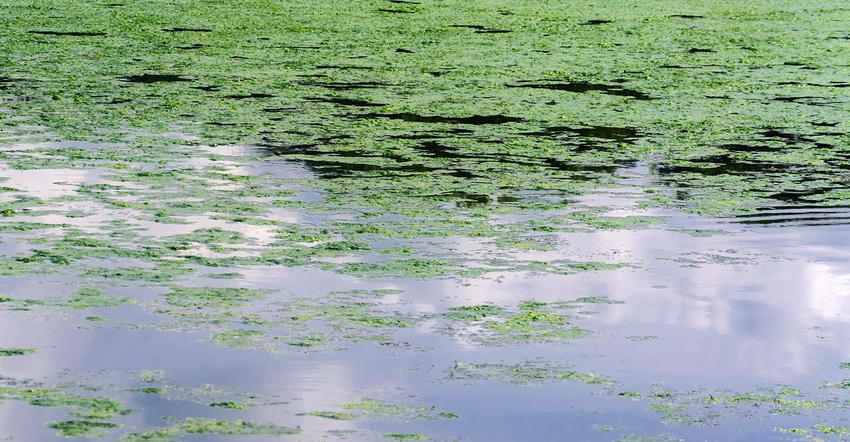July 26, 2017

The National Oceanic and Atmospheric Administration and its research partners predict that western Lake Erie will experience a major, harmful algal bloom this summer, potentially reaching levels last seen in 2013 and 2014, though smaller than the record bloom of 2015.
This year’s bloom is expected to measure 7.5 on the severity index but could range between 6.5 and 9. An index above 5 indicates a potentially harmful bloom. The severity index is based on a bloom’s biomass — the amount of its harmful algae — over a sustained period. The largest blooms, in 2011 and 2015, were rated 10 and 10.5, respectively.
The size of a bloom isn’t necessarily an indication of how toxic it is. The toxins in a large bloom may not be as concentrated as in a smaller bloom. NOAA is developing tools to predict how toxic blooms will be.
The predicted bloom is expected to appear in the far-western basin of Lake Erie in late July and increase in early August, although heavy rains in mid-July may push the late July bloom farther into the basin. Most of the rest of the lake will be unaffected.
“A bloom of this size is evidence that the research and outreach efforts currently underway to reduce nutrient loading, optimize water treatment and understand bloom dynamics need to continue,” says Christopher Winslow, director of the Ohio Sea Grant College Program, which is based at Ohio State University.
“Despite the predicted size of this year’s bloom, much of the lake will be algae-free throughout the bloom season, and the lake remains a key asset for the state,” Winslow says.
Forecast announced July 13
NOAA announced the forecast at a July 13 event and webinar co-hosted by Ohio Sea Grant at Ohio State’s Stone Laboratory at Put-in-Bay on Lake Erie. Winslow was one of the speakers. So was Greg LaBarge, agronomic systems field specialist with Ohio State’s College of Food, Agricultural, and Environmental Sciences.
LaBarge said the college’s efforts to help reduce algal blooms include developing a Farmer Sampling Network in western Lake Erie’s watershed. For that project, LaBarge and his partners in the college are working with 56 area farmers to collect data on how crop selection, irrigation and soil management affect the runoff of phosphorus and other nutrients from their fields. Phosphorus runoff is a cause of the blooms.
“We don’t have a single source we can go after,” LaBarge says. “There are multiple, different sources and ways that phosphorus from fields can get into the water. But farmers generally are looking for the best way to keep it on the land because they paid for it.”
Fertilizer training, other efforts continue
LaBarge also said Ohio’s Fertilizer Applicator Certification Training, or FACT, program, has at last count trained 16,472 Ohio farmers and others on the best practices for applying fertilizer and manure. Spurred by an algal bloom-caused water crisis in Toledo in 2014, the training was established by Senate Bill 150. It is meant to reduce nutrient runoff into Lake Erie and other waters, and is being provided by the college’s outreach arm, Ohio State University Extension.
The deadline to complete FACT training, which is required of farmers who apply fertilizer to more than 50 acres, is Sept. 30. About 20 training opportunities are still available.
A number of scientists at Ohio State — in CFAES as well as in colleges including Engineering, Public Health, and Arts and Sciences — are studying harmful algal blooms and how to stop them. Projects include, for example, developing two new apps that help farmers manage costs, optimize yields and minimize nutrient runoff; studying whether algal bloom toxins are getting into the fish people eat; and developing improved, cost-effective ways for water treatment operators to remove bloom toxins.
HABRI report now available
Some of those projects and others are detailed in the second-year report of the Ohio Department of Higher Education’s Harmful Algal Bloom Research Initiative, or HABRI. Ohio Sea Grant released the report two days before the forecast event, on July 11, on behalf of the department and the initiative’s other partners. Some 33 research teams from Ohio State, the University of Toledo, Kent State University and other Ohio colleges are part of the effort.
NOAA’s annual Lake Erie algal bloom forecast is part of an ecological forecasting initiative that aims to deliver accurate, relevant, timely and reliable ecological forecasts directly to coastal resource managers and the public.
“The Lake Erie harmful algal bloom forecast is another example of NOAA’s ongoing efforts to provide science-based information to water managers and public health officials as they make decisions to protect their communities,” says Russell Callender, assistant NOAA administrator for the National Ocean Service. “We will continue to work with our partners to bring the most accurate data and tools to future forecasts for the region.”
NOAA’s Lake Erie HAB forecast bulletins are available online and by subscription.
Source: OSU Extension and Ohio Sea Grant
You May Also Like




